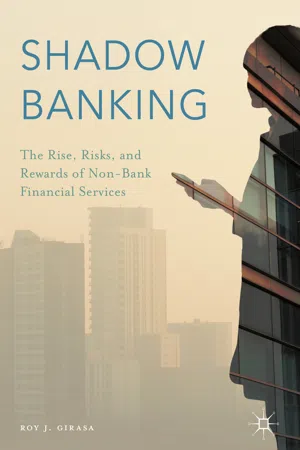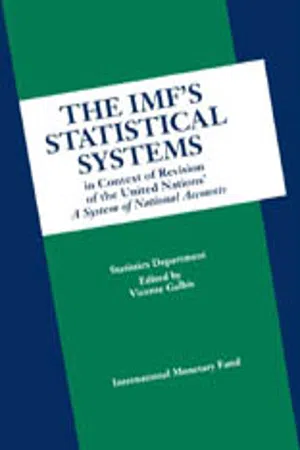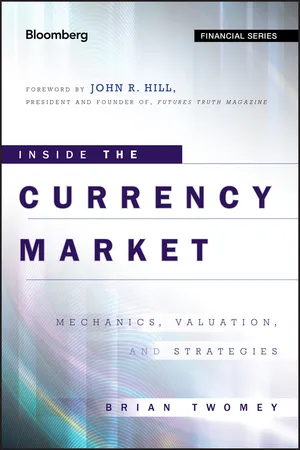Economics
Repurchase Agreement
A repurchase agreement, or repo, is a short-term borrowing arrangement where one party sells securities to another with an agreement to repurchase them at a later date, usually within a few days. The seller pays interest to the buyer for the use of the funds. Repos are commonly used in financial markets for liquidity management and short-term funding.
Written by Perlego with AI-assistance
Related key terms
Related key terms
1 of 4
Related key terms
1 of 3
7 Key excerpts on "Repurchase Agreement"
- eBook - ePub
Shadow Banking
The Rise, Risks, and Rewards of Non-Bank Financial Services
- Roy J. Girasa(Author)
- 2016(Publication Date)
- Palgrave Macmillan(Publisher)
A Repurchase Agreement (repo) is an agreement to sell securities at a particular monetary price with a commitment to repurchase the security at a later date, usually at a higher price. It is a form of a collateralized loan with the difference being that the seller of the security is required to repurchase the asset in which the difference between the sale and purchase price reflects the interest on the loan. An example is where a broker-dealer sells a security, for example a money market mutual fund, and agrees to repurchase the said security the following day in effect with interest. Repos act as a form of short-term funding by financial institutions such as broker-dealers, banks, or mortgage real estate investment trusts. 31 The maturities of repos may be open without a specified repurchase date or a term with a specified repurchase date. A one-day loan is called an overnight repo. The types of collateral that are generally used are treasuries, agencies, mortgage-back securities, corporate bonds, equity, or other agreed-upon collateral. Cash providers include money market mutual funds, insurance companies, corporations, central and commercial banks, securities lenders, and municipalities. Securities are provided by insurance companies, central and commercial banks, securities firms, and hedge funds. The size of the tri-party form of Repurchase Agreement was about $1.73 trillion for 2013. 5.2.2 Types of Repos Repos come in a variety of forms. They include the following: Due Bill Repo. In a due bill repo, the collateral is not held by the lender but is placed in an internal (bank) account in the name of the borrower for the duration of the trade - eBook - ePub
- Vicente Galbis(Author)
- 1991(Publication Date)
- INTERNATIONAL MONETARY FUND(Publisher)
Section IV .Passage contains an image
I. The Repo Market
A Repurchase Agreement is an acquisition of immediately available funds through the sale of securities with the simultaneous commitment by the seller or borrower to repurchase them at a later date.2 The same transaction from the perspective of the supplier of funds is called a reverse Repurchase Agreement (reverse repo). Whereas a repo combines a spot sale with a forward purchase, a reverse repo involves a spot purchase and forward sale.3The Repo Contract
The repo contract establishes the underlying security or securities, the interest rate, the repurchase price, and the term and maturity of the arrangement. Normally it does not cover default arrangements involving bankruptcy of one of the parties.In principle, any asset can be used as the underlying security in the repo transaction, but in practice U.S. government and federal agencies’ securities are more widely used because of their liquidity, low risk, and active market. Other assets that can be used are money market instruments such as certificates of deposit, banker’s acceptances, commercial paper, and commercial banks’ loans or mortgage-backed securities. The use of a mix of different securities in a repo transaction is also common. For illustrative purposes, the following discussion will be limited to transactions involving government securities. However, the same principles apply to repos involving all classes of securities.The role of the underlying security is only to provide collateral to the buyer or lender, not to determine the interest rate on the agreement, which is determined by the money market. The repo rate is typically lower than the rate on federal funds loans, which are not collateralized.4The repurchase price in the repo transaction can be set either at or above the same level as the sale price. If set at the same level, the parties will arrange for a separate interest payment for the use of the acquired funds; if set above the sale price, the difference reflects the implicit interest rate on the contract. Usually a margin, or “haircut,” is set to protect the lender or buyer against fluctuations in the market value of the underlying securities.5 The amount of funds transferred (sale price) is thus equal to the market value of the underlying security plus (in the case of coupon securities) accrued interest less the margin.6 In general, the margin will be larger the longer is the maturity of the underlying security and the less liquid the security is. Haircuts range from 1 percent to 5 percent, but may be as low as 1/8 percent of a point for very short-term securities.7 - eBook - ePub
The Business of Investment Banking
A Comprehensive Overview
- K. Thomas Liaw(Author)
- 2011(Publication Date)
- Wiley(Publisher)
CHAPTER 13 Repurchase AgreementS AND PRIME BROKERAGE Repurchase Agreements (repos) are extensively used in dealer funding, customer financing, and matched-book trading. The repo desk has become the hub around which the trading, hedging, and arbitrage strategies revolve. At many firms the repo desk has become a key profit center. Understanding the repo market is essential to assessing value in the fixed-income markets. For example, the status of a bond in the repo market can be used to understand the relative values between bonds and also to assess the valuation of futures contracts. This chapter describes the structure, development, trading mechanics, and market practices for repos. Later sections of the chapter cover the upper and lower bounds of special repo rates, brokering, and matched-book transactions. Investment banks provide prime brokerage services as well. FIXED-INCOME Repurchase AgreementS The fixed-income repo market is the biggest money market. This is much larger than the federal funds market and is the biggest short-term money market in the world. Government securities dealers borrow huge amounts of short-term funds to finance their positions every day, and often they find that the least expensive way to do so is in the Repurchase Agreement (repo) market. In a typical repo transaction, a dealer puts up liquid securities as collateral against a cash loan while agreeing to repurchase the same securities at a future date at a higher price that reflects the financing costs. A typical transaction is depicted in Figure 13.1. The sale is the start leg, and the repurchase is the close leg. The party that lends securities in exchange for cash is often referred to as the collateral seller. The counterparty that takes in securities and lends out funds is called the collateral buyer. In practice, a repo is generally described from the dealer's perspective - eBook - ePub
Investing in Fixed Income Securities
Understanding the Bond Market
- Gary Strumeyer(Author)
- 2012(Publication Date)
- Wiley(Publisher)
repo is used when viewing the transaction from the perspective of the seller of the securities—the party borrowing the funds or selling the securities is thus engaging in a Repurchase Agreement (repo). The supplier of the funds or purchaser of the securities initially would then be engaging in a reverse repo. This repo transaction can also be viewed as a secured loan where the seller of the securities is in effect borrowing funds from the buyer and pledging the securities as collateral. In many ways, repos are hybrid transactions combining the concept of outright sales and purchases with that of secured loans. The repo rate then is commonly quoted as an interest rate (on a yield basis). Due to the securities pledged, the seller of the securities normally receives a more advantageous interest rate than would be obtained on a nonsecured borrowing (i.e., federal funds market).Terms
Repurchase Agreements are normally transacted with terms from overnight to 90 days. The majority of repos are overnight transactions. Repos can be transacted on an open basis as well where the repo continues to roll each day until closed out by either party.Transactions are generally conducted by institutions and high net worth individuals, as Repurchase Agreements are normally issued with denominations of at least $100,000. Most transactions are in fact executed for far larger amounts. Repos in excess of several hundred million dollars are not uncommon.Interest received on repos is fully taxable on federal, state, and local levels.The interest rate paid on a repo transaction is negotiated between the buyer and seller and has no relation to the rates on the underlying government securities. In fact, if the repoed security pays a coupon during the repo period, the amount is returned to the original owner. - eBook - ePub
An Introduction to Banking
Liquidity Risk and Asset-Liability Management
- Moorad Choudhry(Author)
- 2011(Publication Date)
- Wiley(Publisher)
6 A stock loan is just that, a borrowing of stock against a fee. Long-term holders of stock will therefore enter into stock loans simply to enhance their portfolio returns. We will look at the motivations behind the total return swap in a later chapter.Note that during the interbank liquidity crisis from September 2008 to well into 2009, when unsecured inter-bank markets dried up, repo was the only funding mechanism still available to many banks. DefinitionA repo agreement is a transaction in which one party sells securities to another, and at the same time and as part of the same transaction commits to repurchase identical securities on a specified date at a specified price. The seller delivers securities and receives cash from the buyer. The cash is supplied at a predetermined rate – the repo rate – that remains constant during the term of the trade. On maturity the original seller receives back collateral of equivalent type and quality, and returns the cash plus repo interest. One party to the repo requires either the cash or the securities and provides collateral to the other party, as well as some form of compensation for the temporary use of the desired asset. Although legal title to the securities is transferred, the seller retains both the economic benefits and the market risk of owning them. This means that the ‘seller’ will suffer if the market value of the collateral drops during the term of the repo, as she still retains beneficial ownership of the collateral. The ‘buyer’ in a repo is not affected in P&L account terms if the value of the collateral drops, although there are other concerns for the buyer if this happens.We have given here the legal definition of repo. However, the purpose of the transaction as we have described above is to borrow or lend cash, which is why we have used inverted commas when referring to sellers and buyers. The ‘seller’ of stock is really interested in borrowing cash, on which (s)he will pay interest at a specified interest rate. The ‘buyer’ requires security or collateral against the loan he has advanced, and/or the specific security to borrow for a period of time. The first and most important thing to state is that repo is a secured loan of cash, and would be categorized as a money market yield instrument.7 - eBook - ePub
Inside the Currency Market
Mechanics, Valuation and Strategies
- Brian Twomey(Author)
- 2011(Publication Date)
- Bloomberg Press(Publisher)
CHAPTER 4 Short-Term Interest Rates and Money Market InstrumentsThe purpose of this chapter is not necessarily to know how to trade Repurchase Agreements although a full outline is presented. Instead, Repurchase Agreements represent the shortest-term interest rate within a nation, the prime mover of a spot price. These shortest-term interest rates can connect to a currency price through factors of interest. Factors of interest for Repurchase Agreements represent the shortest-term deposit rates and deposit rates represent the bid side of a currency pair. It determines the cost of money. A bid side rate represents the floor for rates, so it is imperative to understand this market.Repurchase AgreementsRepurchase Agreements comprise two forms, a repo rate and a reverse-repo rate. The reverse-repo rate can, depending on market conditions, represent an ask side of a currency, a ceiling. But that is one currency. Each nation must be understood due to the various factors to achieve its repo rate and the day-count factors of interest.Crisis economic conditions forced not only the normally reported and understood general collateral (GC) rate, but a government rate was established as borrowers were forced to borrow from central bank facilities. This chapter outlines all the various aspects of the Repurchase Agreement market from nation to nation. What was once a rate hidden from the market has, in the last 10 years or so, become a regularly reported rate with updated rates published periodically throughout any trading day.What were once popularly known as repos since the inception of central banks before World War I have now become known as Repurchase Agreements and reverse-Repurchase Agreements that serve a vital function of the daily operation of banking systems throughout the world.Traditionally, repos were employed as a monetary tool by central banks to add or subtract liquidity from the banking system as needed to manage the supply of money that flowed through banks. This was conducted through sales or purchases of respective nations’ treasury bonds, notes, and bills. When central banks bought repos or bonds, they added liquidity, and they drained liquidity when they reversed the transaction. This occurred traditionally when rates were misaligned such as a misaligned Fed funds rate to other short-term interest rates or, as in days past, when the discount rate was misaligned with the prime rate to offer a U.S. example. The system was a simple process. - eBook - ePub
- Sanzhu Zhu(Author)
- 2018(Publication Date)
- Routledge(Publisher)
First, the securities are pledged as a collateral security by the seller of the securities (the cash borrower) for the transaction. Second, they are short-term financing instruments. Third, the seller repurchases those securities at a later time with a payment of interest to the other party (the cash lender). These essential elements are emphasized by the regulations and government circulars. For example, it is emphasized in the 1995 Circular on Reiteration of Relevant Issues Concerning Further Standardization of Securities Repurchase Business that sellers must have one hundred percent government or financial bonds of their own for the Repurchase Agreements and these securities must be placed with a securities registration and custodian organization designated by the regulator; the term of Repurchase Agreement may not exceed one year. 36 In Ha'erbin Finance Securities Co. v Shenzhen Securities Business Center of Yunnan Securities Co. Ltd, 37 the plaintiff and defendant signed six government bond Repurchase Agreements between December 1994 and July 1995 with a total agreement amount of 201.50 million yuan. The defendant was the party who received the funds and who agreed to repurchase the bonds at the end of the agreements, ranging from terms of three months to eleven months. The plaintiff advanced the funds to the defendant after the agreements were signed and the defendant issued "certificates for safekeeping of government bonds" to the plaintiff without having sufficient real government bonds. The defendant defaulted at the end of the agreement and the plaintiff brought the case to the Heilongjiang High People's Court. The Court annulled the agreements on the ground that the agreements had violated the regulation that sellers in a securities Repurchase Agreement must have a full and real amount of securities for the transaction. This finding was affirmed by the Supreme People's Court when the case was appealed by the defendant
Index pages curate the most relevant extracts from our library of academic textbooks. They’ve been created using an in-house natural language model (NLM), each adding context and meaning to key research topics.
Explore more topic indexes
Explore more topic indexes
1 of 6
Explore more topic indexes
1 of 4






